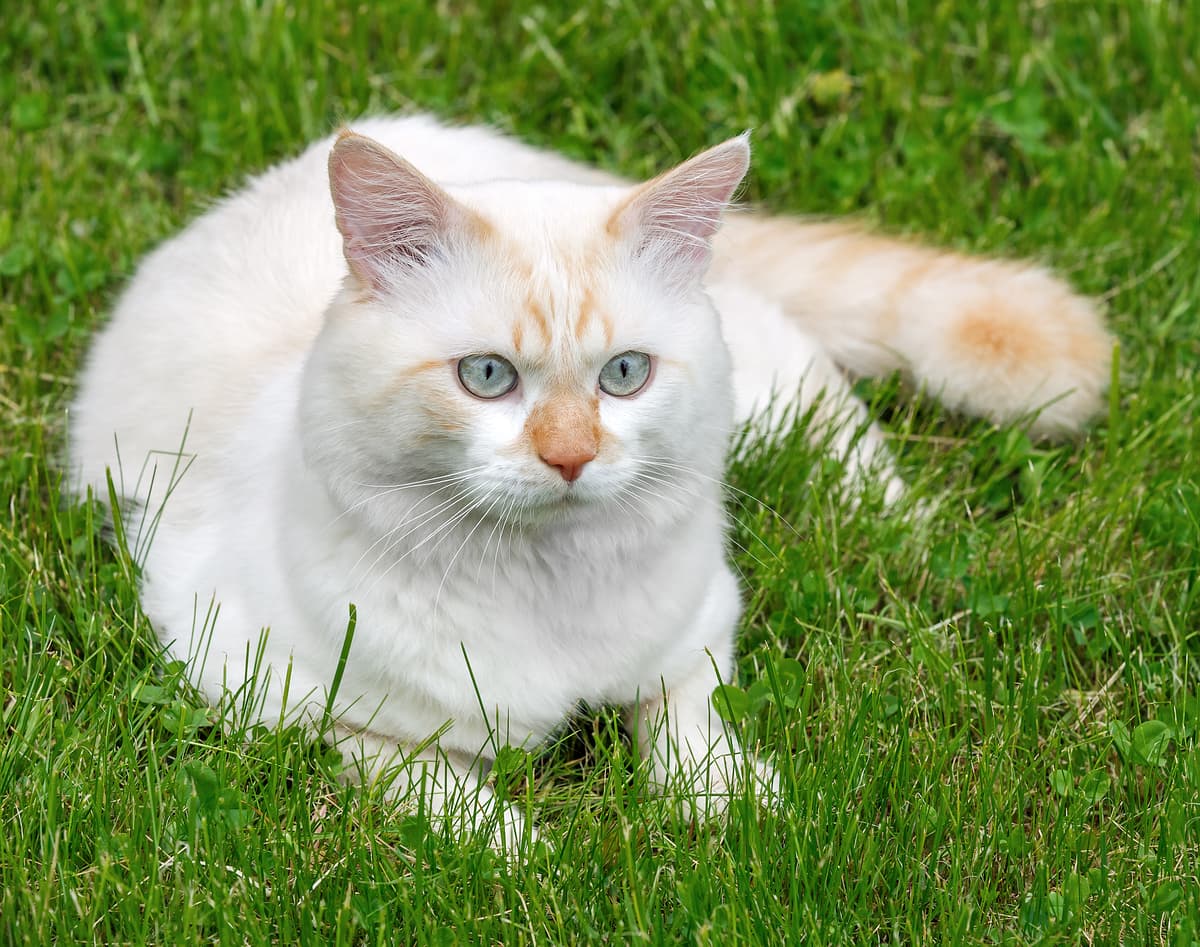Turkish Van vs Norwegian Forest Cat
Discover the differences between Turkish Van and Norwegian Forest Cat to make the best choice for your situation.
Try different breeds

Turkish Van
Playful, curious, and known for a love of water, this breed forms strong bonds with families. Distinctive semi-longhaired coats and energetic personalities make them lively companions.

Norwegian Forest Cat
Majestic and affectionate, this sturdy cat charms with a thick, water-resistant coat and a gentle, playful spirit. Adaptable and loyal, it thrives in active households and quiet homes alike.
Quick comparison
Large
5–9 kg
Semi-longhaired, water-resistant
12–17 years
4–7 kg
High energy
Large
5–9 kg
Longhaired, water-repellent
12–16 years
3.5–7 kg
Moderately active
Personality & behavior
Compare the personality traits and behavioral characteristics of both breeds.
Turkish Van
Affectionate but may prefer select family members
Learns quickly and solves simple problems
Highly active and energetic throughout the day
Loves interactive games and chasing toys
Adjusts well to new environments and routines
Norwegian Forest Cat
Enjoys human company, gentle with children
Learns routines and new environments quickly
Moderate activity, enjoys climbing and exploring
Likes interactive games and toys
Adjusts well to home changes and new people
Care needs
Exercise, grooming, and daily care requirements
Turkish Van
Hypertrophic cardiomyopathy, deafness
Norwegian Forest Cat
Glycogen storage disease IV, hypertrophic cardiomyopathy
Suitability
How well each breed fits different living situations and families
Turkish Van
Challenging for beginners
Turkish Vans are active and independent, which may be overwhelming for new owners
Needs more space
Their high energy and playfulness can be difficult in smaller apartments
Highly suitable
They enjoy interactive play and thrive in busy, active environments
Good with supervision
They can be gentle but may play too roughly for very young children
Selective tolerance
Turkish Vans may get along with other pets if introduced carefully
Not recommended
They dislike being left alone for long periods and may become destructive
Norwegian Forest Cat
Good option
Gentle and adaptable, but benefits from owners willing to learn grooming needs
Works with effort
Can adapt to apartments if provided climbing spaces and stimulation
Highly suitable
Enjoys play and activity, fitting well in energetic homes
Very friendly
Patient and gentle, generally tolerant of respectful children
Good companion
Gets along with other pets if introduced properly and given space
Not ideal
Dislikes long periods alone and may develop stress or boredom
Breed strengths
What each breed excels at and their best qualities
Turkish Van
- Strong swimmer with affinity for water
- Playful and energetic daily companion
- Highly intelligent and trainable cat breed
- Generally robust health and longevity
- Loyal and forms strong owner bonds
Norwegian Forest Cat
- Adaptable to various living environments
- Affectionate without being overly demanding
- Strong climbers with agile movement
- Thick double coat protects in cold climates
- Generally healthy with few genetic issues
Challenges & considerations
Potential challenges and considerations for each breed
Turkish Van
- Needs frequent interactive physical activity
- Can be territorial with other pets
- May become bored without mental stimulation
- Prone to shedding and seasonal coat changes
- Can be vocal and demanding for attention
Norwegian Forest Cat
- Requires regular grooming to prevent mats
- Prone to obesity if under-exercised
- Can be shy with strangers initially
- High prey drive may affect small pets
- Needs mental stimulation to prevent boredom
Ready to choose your perfect breed?
Learn more about each breed or compare other breeds to find the perfect match for your lifestyle.
Discover more helpful tools
Make use of our other free tools to get the most out of your pet experience
